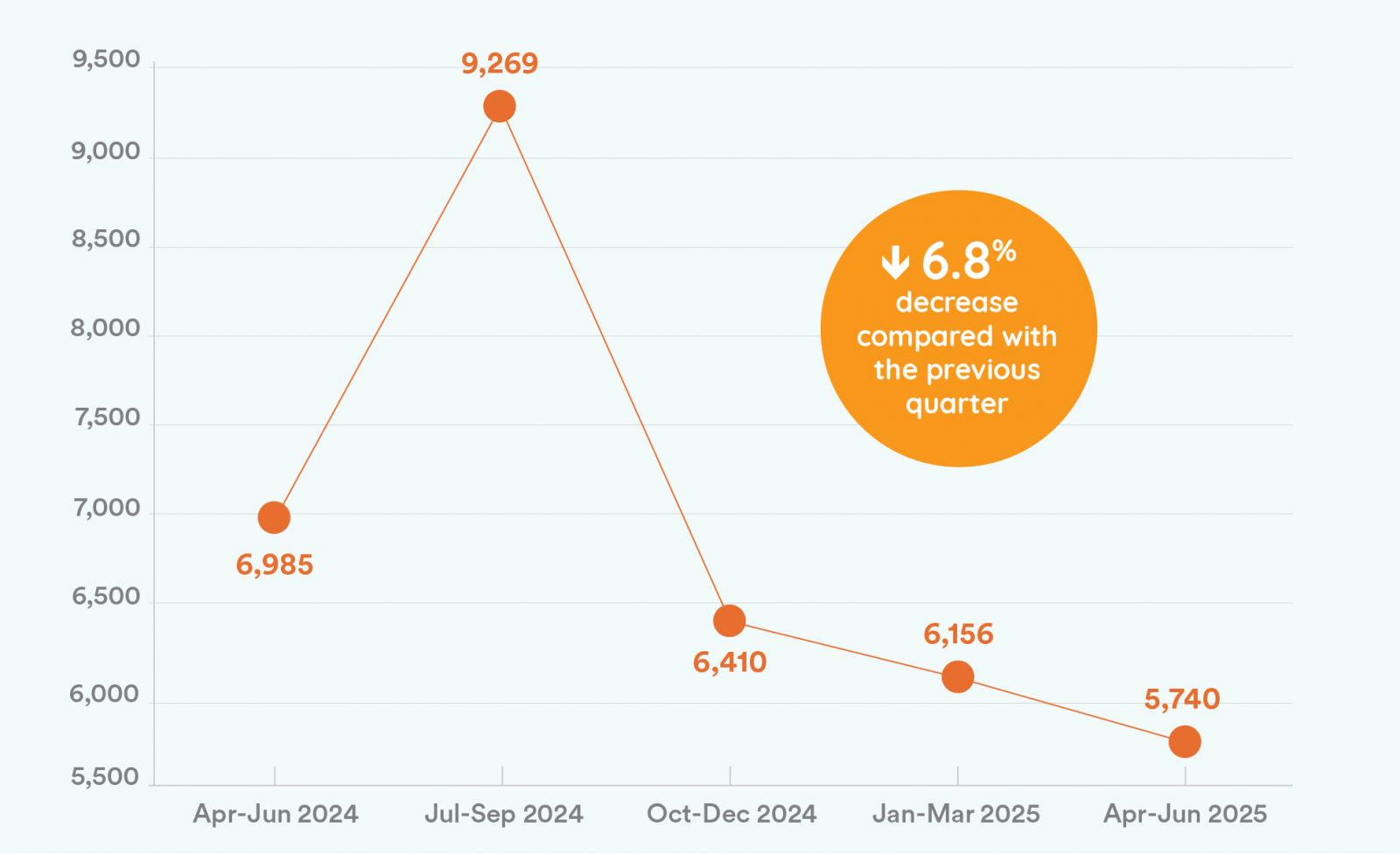In December 2024, EWON’s jurisdiction expanded to landholders and community members impacted by transmission entities and renewable energy infrastructure (REI) associated with the planning and development of Renewable Energy Zones (REZs).
This jurisdictional change occurred when EnergyCo and ACEREZ joined EWON as members. EnergyCo is the NSW Government entity that coordinates the development of transmission infrastructure and associated generation in the REZs. ACEREZ is the entity that is designing and constructing transmission in the Central West Orana REZ.
REI complaints are quite different from most energy complaints EWON receives. Firstly, EWON does not have jurisdiction over all entities that are building renewable energy infrastructure as there is currently no government requirement for renewable generation entities to become a member of EWON. And yet, a quarter of REI complaints that EWON has received to date are in relation to large scale solar and wind generation developments. Without having jurisdiction over these developers/generators, EWON’s assistance is limited to the provision of information and referrals. We are working with the NSW Department of Climate Change, Energy, the Environment and Water (DCCEEW) to explore possible options to bring these complaints about generation and storage developments into our jurisdiction.
Secondly, all REI complaints are highly complex, involving a patchwork of different legal and regulatory frameworks, and in many cases involving years of backstory and hundreds of pages of documents. In 2025 there are two major transmission lines in construction in NSW, with another three in the route refinement process. Each project goes through the NSW planning system, which involves extensive documentation including expected impacts and mitigating strategies, and also involves a consultation process. Our REI dispute resolution team needs to review all relevant documents to understand if proper processes have been followed.
Building our trusted voice
A core objective of our REI jurisdiction is to become recognised and accepted as an independent and trusted voice, particularly for communities living in rural and regional NSW where the majority of new energy infrastructure is being built. EWON’s well-established dispute resolution processes and community engagement experience positions us well to be this trusted voice. A common piece of feedback heard by our Energy Transition team on our regional engagement trips is that community members are glad to have an independent body to talk to.
Only months into our new jurisdiction, EWON contributed to the Transmission Planning Review and the Ombudsman spoke at the NSW Parliamentary Inquiry – Impact of Renewable Energy Zones on rural and regional communities and industries in New South Wales. The Ombudsman also took part in ABC’s Big Ideas Citizens Jury in Dubbo to hear from local residents about their concerns with REI developments. Taking part in these public forums allows EWON to contribute an overview of current complaint issues and insights form our community engagement in the REZs.
Dissatisfied with transmission line placement
The top issue landholders complain to EWON about is the location of easements to host transmission infrastructure. In some cases, the landholder considers the line placement is too close to their house. In others, they are concerned the lines will cause potential financial loss to their farming operations.
While most landholders recognise the transmission infrastructure is needed, they frequently believe the route is determined by city-based desktop analysis rather than appropriately considering the needs of the landholder’s farming operations and terrain.
Some landholders are also critical of the legislative framework for how statutory bodies can acquire privately owned land in NSW. EWON has heard from these landholders that in their view the framework is inadequate for deciding the amount of compensation that should be awarded in relation to transmission lines. Unlike houses being acquired for new highways or public projects where residents are required to move, landholders will continue living and working on the land surrounding the acquired easement, with the associated visual, traffic, noise and other impacts continuing for several years. Additionally, there are tax implications for any compensation received - so landholders tell us they feel like government is giving with one hand and taking with the other.
EWON’s expectation is that the entities involved will improve their practices for subsequent transmission projects. While EWON can provide information about navigating the acquisition process, we advise landholders to seek their own legal advice. We also refer landholders to the Centre for Property Acquisition for more detailed information of their rights and responsibilities.
Poor community consultation
One of the most common pieces of feedback heard by the Energy Transition team is that communities want consultation that is genuine and meaningful rather than what they have experienced – described to us as being a “tick a box” exercise. We’ve heard that community consultation is often last minute, doesn’t involve the whole community and is superficial. Some community members report feeling resentful that they have attended multiple consultation sessions (for which they are not being paid) to provide crucial information to different project staff (who are being paid to listen) about local details, for example about dwellings that exist where the desktop map shows none. But they do not feel listened to, are not provided with responses to issues raised or provision of updated reports or maps.
Many community members, and some councils, are still unaware that individuals can contact EWON for information or to lodge a complaint, so they have felt they had no choice but to accept their situation.
Our community engagement program aims to increase awareness of EWON in regional areas, and we are working with related members to drive an increase in their information provision to landowners and community about EWON’s role.
Case study
 Landholder wants transmission line location moved
Landholder wants transmission line location moved
A landholder contacted EWON about wanting to move the proposed placement of a new transmission line on his property. He had already signed the Deed of Easement but tried to negotiate the placement of the line after signing. At the time of lodging the complaint, the landholder had refused the entity access to his property to negotiate a Property Access Plan.
EWON reviewed the issues causing the breakdown in communication and explored ways to re-establish constructive communication. We advised the landholder that since he had already signed a legal agreement for the easement, our investigation was limited. However, we arranged a conciliation conference at his property between himself, his family member and key decision makers from the renewable energy infrastructure entities involved.
In preparing for the conciliation conference, EWON met with all parties to agree on issues to be discussed. On the day, we visited three different locations at the property. Our facilitation ensured both parties were able to share their perspectives and discuss potential options.
Due to EWON’s involvement, the relationship between the landholder and the entities has improved with direct communication re-commencing. Where there were unresolved issues, we ensured both parties agreed on actions to be taken.
The complaint was closed on the basis that there was already a Deed of Easement in place and if the landholder did not provide access, then legal action would commence. We confirmed that the offers made as part of our conciliation process remain open for the landowner and EWON member to negotiate.
Case study
 Poor community consultation
Poor community consultation
A landowner contacted EWON about the proposed location of a workers camp to support the construction of transmission infrastructure. She said the transmission entity had not consulted with her despite her being a neighbouring property owner. She considered the proposed location wasn’t appropriate and contradicted the transmission entity’s own policies. She wanted it to provide funding for her to seek legal advice and property valuation. She emailed the entity but they did not respond.
We connected the landholder with the correct person at the entity who set up a meeting with her to resolve the matter. We let her know that as the infrastructure is not on her property, the entity is not obliged to pay her legal fees. We advised if she is unhappy with the outcome after the meeting she can return to EWON.


 Landholder wants transmission line location moved
Landholder wants transmission line location moved

